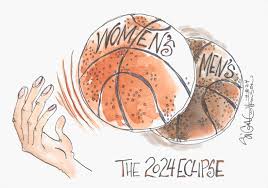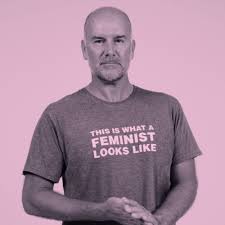1
Section One: The Fundamentals
A) What do we know about sport? What are common assumptions we make about sport and society?

|
Although sports are a very popular topic amongst many groups and they bring many individuals together. I disagree with the statement that they speak a universal language, this is because many individuals do not understand or do not care for sports at all. In fact, they can often be left out of situations due to their lack of knowledge of certain sports. For example, everyone in my household loves at least one sport, for my brother and me it is soccer and for my dad, it is Formula One, because of our shared love for sports we all engage in conversations about both sports as we watch both together. However, my mom has no interest in them and doesn’t know much, due to this she is often left out of conversations or experiences that my dad, brother and I experience. My mom does try her best to include herself by learning players/drivers or rules, however at the end of the day she still doesn’t have much of an interest in what is going on. Due to examples like this, I believe the statement that ‘sports speak a universal language’ to be untrue because although many and possibly the majority of people love them it is not something that every single person likes! |
Exercise 3: Notebook prompt
What are some other metanarratives about sport that you are familiar with? Find an image or video clip or draw something yourself that captures this idea…
So what? Why does any of this matter? Does it matter? As something we grow up with – live with – play through – we don’t often interrogate the meanings of sport, and perhaps we don’t want to.
But being aware of these assumptions and metanarratives is especially important, I would argue, because of the centrality of sport to our everyday lives, the role that sport plays in shaping our childhood and worldviews and….. [finish that thought]
| I think the idea of an underdog story is also a metanarrative, this is the idea of a team or player no one expected to win due to their lack of experience or resources. A picture that I believe captures this is Fisichella finishing 2nd in 2009 at the Belgium Grand Prix for Force India. Force India is considered one of the teams at the bottom so coming 2nd in a race is a big accomplishment for them.
But being aware of these assumptions and metanarratives is especially important, I would argue, because of the centrality of sport to our everyday lives, the role that sport plays in shaping our childhood and worldviews and….. IDENTITIES CREATE WHO WE ARE AS A SOCIETY, AS WE OFTEN CREATE EXPECTATIONS FOR OURSELVES AND OTHER BASED ON SPORTS. |
B) What is social justice?
Exercise 4: Padlet Prompt
Think back to the last section and try to look at some of the ideas we discussed differently. How might sport and social justice actually co-exist?
Record any images, video clips, or gifs you added to the padlet and identify a point of intersection between sport and social justice (can be an issue or a barrier or a debate or something you would like to explore in more depth in this course) . Screenshot or paste in your response below.
| When I hear advocacy and activism in sports I immediately think of two F1 drivers who were never afraid to stand up for what they believed in no matter who was against their activisms. These drivers are Lewis Hamilton and Sebastian Vettel, both these drivers made sure to make it known that they support the black lives matter movement as well as their support for the LGBTQ+ movements. They were often called out by people of power for imposing their beliefs onto the sport, however, this never stopped them as they continued to make sure everyone would be heard no matter their race, sexuality, or gender.
|
C) Social Justice Reading
(note: this activity is optional!)
D) KINESIOLOGY AND SOCIAL JUSTICE
Exercise 5:


Exercise 6:
What are the implications of bodies-at-risk discourse and the refusal to understand the health gap from a social justice perspective, according to the authors of this article?
| The implications this article discussed are related to how. certain people are more at risk for health problems, these people include people of colour, women and individuals with disabilities. This however is a very problematic way of thinking as it doesn’t look at the broader issue, instead it blames these individuals for their health. There are many other issues such as poverty, discrimination and poor healthcare that can play a factor, however, they aren’t looked at. The authors of this article discuss how we need to focus and start fixing the bigger issues instead of looking for a temporary solution, in order to do so we need to listen to the experiences of marginalized individuals. |
Section Two: Sport Feminism
Exercise 7: Notebook Prompt
What is feminism? What does it mean to you? Choose one of the images below and explain how it captures your understanding of feminism (or find one that does speak to you and paste this into your pressbook with an explanation of why it matters to you.
| To me feminism is the equality between men and women, I believe that when many people hear the term ‘feminism’ they think it is only women fighting to have a higher place in society when comparing themselves to men. However, I believe it is both men and women working together to create a society that has the same standards and expectations for both men and women. I chose this image below because it breaks down many stereotypes about feminism. For example the standard stereotypes of colours, pink being a ‘girls colour’. This image breaks that down by presenting a man in a pink only picture. The concept of having a man who is wearing a shirt that says “This is what a feminist looks like” also gets rid of the idea that only women are feminists and that feminists hate men.
|
Exercise 8: Notes Prompt (optional)
NB: Cornell notes is a great resource that teaches effective notetaking. Unfortunately, our system can’t save notes taken in the H5P app, so this is fully optional.
Exercise 9: Crossword Activity

Exercise 10: Padlet Prompt
| Two important terms that were not included in the crossword were;
Intersectionality: Intersectionality is when one has multiple disadvantages which intersect causing them to experience disadvantages, for instance, a black man will experience many inequalities due to his race, however, black women will experience both racial and gender disparities. Radical Feminism: This is the belief that patriarchy and male dominance are at the center of women’s oppression therefore radical feminists believe it is important to re-order society and to completely reconstruct gender roles to be more equal. |

|
|




